The strength of our union lies in the fact that every SMART member has each other’s back. From sheet metal workers on the same jobsite, to production workers at the same manufacturing company, to railroaders working in the same state, to the fact that we are all members of the same union, across the United States and Canada.
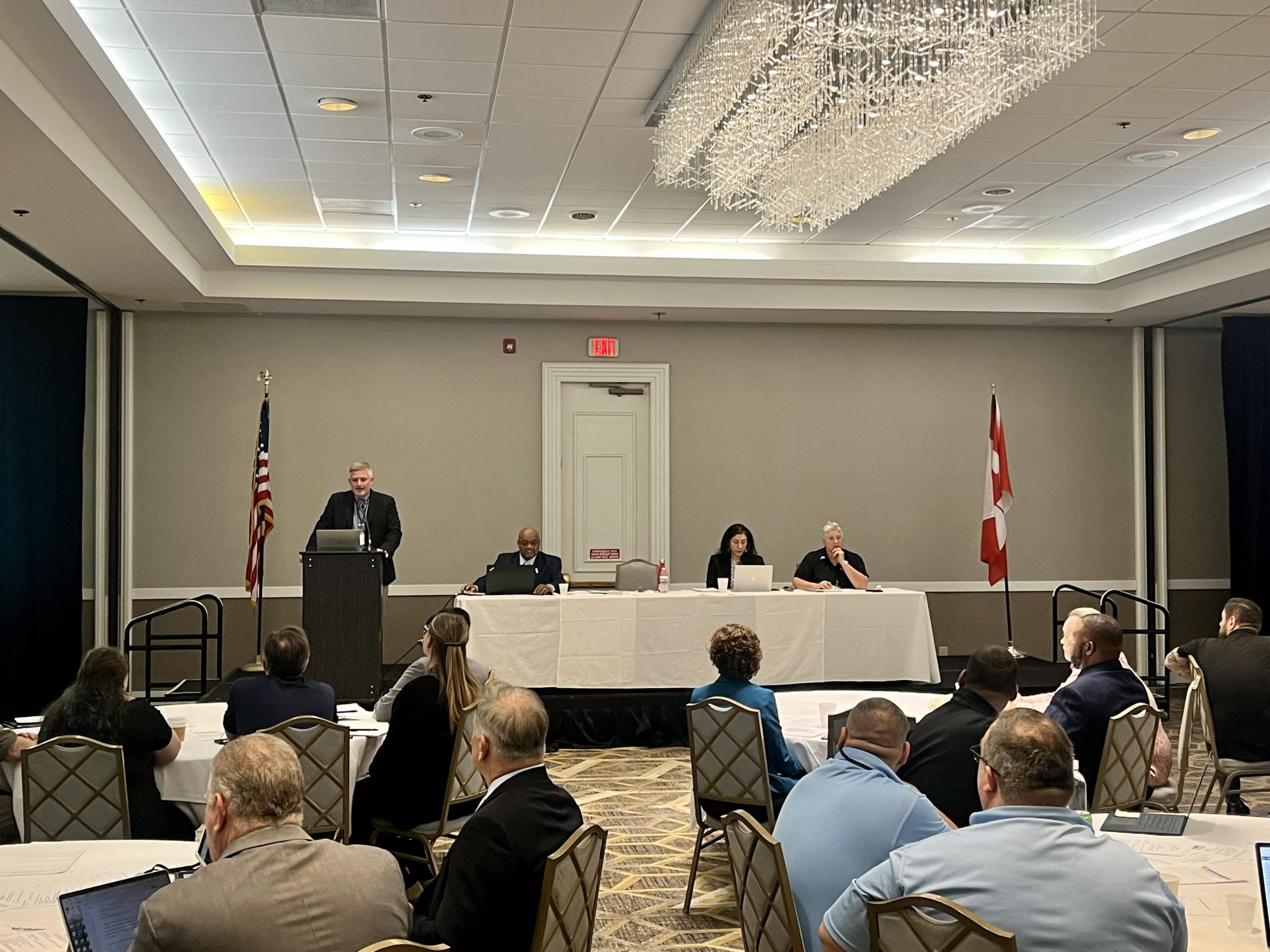
That principle was on display in December 2024, when the Recruitment and Retention, Roofing and Building Enclosure, and Production Workers and Sign Councils met in Cathedral City, California. Dubbed the “Three Pack Attack,” the council meetings convened sheet metal and transportation leaders from all over North America to focus on both holistic challenges and specific industry landscapes. Whether overviewing rail safety from a recruitment lens or strategizing ways to use the picket line to our advantage, the goal remained the same: growing and strengthening our fighting union.
“I certainly think we’re going to have our challenges,” said SMART General Secretary-Treasurer John Daniel during the Recruitment and Retention Council meeting. “But with every new challenge comes an opportunity for growth.”
Securing our future: Recruitment and Retention Council maps challenges, opportunities ahead
After President Chuck Greer (Local 12, Pittsburgh, Pa.) brought Recruitment and Retention Council delegates to order, Local 105 Business Manager Steve Hinson welcomed attendees to Southern California on Monday, December 2. Hinson talked about the importance of recruitment and retention to Local 105 and our union’s efforts to expand market share.
General Secretary-Treasurer Daniel then took the podium, where he looked back on the 2024 election results and touched on our union’s response — plus the outlook moving forward. During President Trump’s first term in office, Daniel explained, SMART’s apprenticeship programs and pension plans came under direct attack. Trump also appointed a number of anti-union staffers to key positions in the Department of Labor, National Labor Relations Board, OSHA and more, all of which impacted SMART’s ability to organize and retain new workers.
That said, Daniel continued, SMART will work with any candidate to advance the interests of union members. Regardless of the political climate, it’s our union’s job to ensure sheet metal and transportation workers are represented as effectively as possible — and moving forward, maintaining consistent communication with members in response to any anti-union developments will be key.
“We need to make sure we’re present on the jobsite, present in the shops,” Daniel said.

SMART Director of Organizing Jason Benson delivered a detailed presentation on SMART’s sheet metal organizing and attrition numbers since 2019, giving attendees key insights into the importance of retention strategies that accompany our aggressive recruitment. Retention rates grew each of the last five years, in parallel with SMART’s overall membership increase. Still, Benson challenged the council to come up with new ways to keep members in our union.
“We’ve done a fantastic job bringing people in,” he said. “We have a great opportunity to grow SMART to be much bigger than what we are now. … We can all be better, and we will be better.”
Council Trustee Shamaiah Turner (Local 17, Boston) and Council Vice President (Production) Stephanie Bottke (Local 480, Faribault, Minn.) conducted an interactive workshop on succession planning at the local union level. Succession planning is crucial to SMART’s success — not just for strategic continuity, but also when it comes to membership engagement, preserving connections with local communities and more. During the session, attendees talked about leadership development, successes and challenges in helping members step up to be leaders, resources and more.

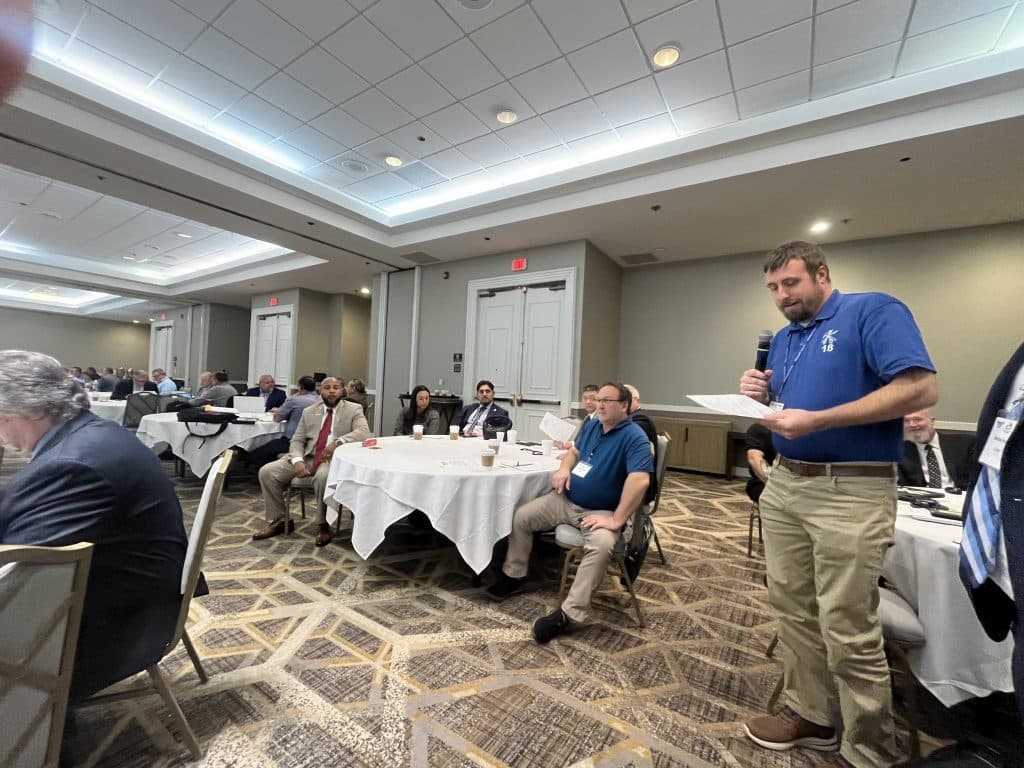
After lunch, Local 28 (New York City) member and Nontraditional Employment for Women President Leah Rambo took the podium alongside Nicholas Beadle, chief of staff for Workforce and Policy at the U.S. Department of Labor, and Tammi Fleming, infrastructure investment equity fellow at the DOL, to discuss building infrastructure with an equitable workforce.
Organized labor is in an opportunity moment, the presenters told attendees; one where we can use infrastructure construction demands to increase union membership and recruit more women, people of color and other underrepresented populations — securing greater industry strength and market share in the process. Now, it’s up to us to take on current impediments, from discrimination and harassment to structural barriers, and to leverage funding opportunities to revamp our recruitment processes, confront obstacles like childcare and transportation access, and seize this moment of growth.
The challenges confronting SMART Transportation Division locals can differ vastly from those facing sheet metal unions. However, many of the strategies SMART-TD has deployed to successfully take on these challenges have a universal application. Jerry Gibson, chief of staff of the Transportation Department, highlighted innovative steps the TD organizing department has taken in the last several years.
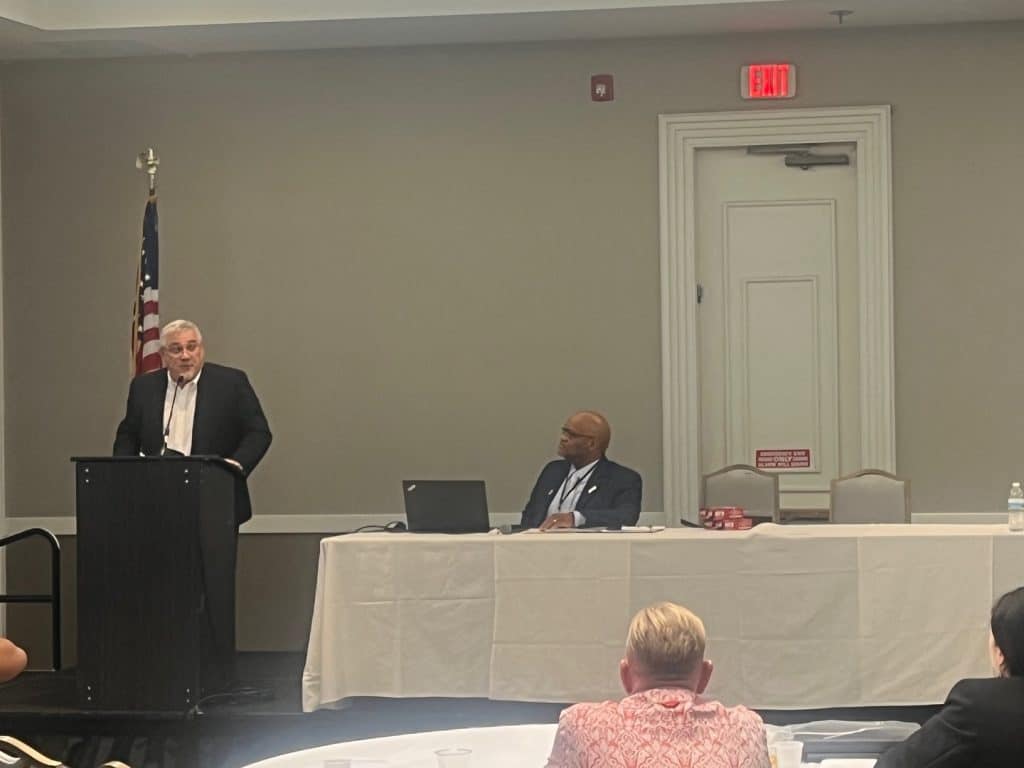

Externally, the Transportation Division has organized eight new rail properties and one new bus property since 2019. But the real focus has been on internal organizing: educating and engaging members, improving communication (especially with members who are upset) and — perhaps most importantly — reaching out to those transportation workers who have left our union. By doing that, Gibson said, SMART-TD has greatly improved the number of transportation workers we have welcomed back into our ranks.
SMART-TD Trainer Chad Yokoyama then took center stage to highlight the risks of rail hazmat transportation. Every day, railroaders carry hundreds of thousands of gallons of hazardous materials across the United States — making Yokoyama’s session relevant not only to railroaders, but Americans everywhere. The risks of transporting hazmat and the consequent need for adequate safety and training make it a recruitment issue, he explained: Members need to feel protected when they’re on trains with potentially dangerous chemicals.

Council Vice President Shannon Kilgar of Local 30 (Toronto, Ontario) concluded the day, paying tribute to the Recruitment and Retention Council delegates who came together across cities, states, provinces and countries for one purpose: furthering the interests of SMART.
“Our success moving forward is of the upmost importance to our members,” Kilgar said.
Roofing and Building Enclosure Council meets to expand market share
SMART General Secretary-Treasurer Daniel, president of the SMART Roofing and Building Enclosure Council, called the council to order on day two of the Three-Pack Attack, with officers and members working to increase industry knowledge and to capture, maintain and protect market share.
After council Secretary-Treasurer Michael LaFleur, business manager of Local 63 (Western Mass.), reported back to attendees on the body’s finances and the 2024 MetalCon conference in Atlanta — which was attended by officers of the council — Assistants to the General President Darrell Roberts and Tom Wiant took the podium to update delegates on various initiatives that are either underway or ready to be introduced from the International, including the new maternity leave benefit fund.

Roberts and Wiant reminded officers that these initiatives were the brainchildren of SMART members — similar officer engagement and proactivity will be needed moving forward. Finally, they updated attendees on the status of resolutions proposed by the council during the 2024 SMART General Convention.
SMART Director of Governmental Affairs Steve Dodd addressed the council next, recapping the results of the 2024 election and urging officers to continue engaging in the political process. Regardless of who is in office, Dodd explained, SMART will continue to fight for members in the political arena — and make sure to keep members informed on policy actions in government, both good and bad.
“Nothing is more meaningful than being part of a struggle for democracy,” he said. “When we fight, we do some good things.”

Local 105 offered a multifaceted presentation on how the local has secured and maintained market share in the architectural sheet metal industry. Business Agent Ruben Richards overviewed Local 105’s history in the architectural sector — both declines and regrowth in market share — and discussed the current landscape in Riverside County, with more than 30 architectural companies signed to Local 105 (including multi-signatory companies with other unions). Richards emphasized the importance of training for the future and securing contractor buy-in to invest today in growth tomorrow.
Attendees then heard from signatory contractor Best Contracting’s Vice President of Operations, Alana Bowman. Best Contracting serves as a one-stop shop for building envelope systems in Southern California and is signatory to various trade unions; the contractor has performed work on projects like the Los Angeles Football Club soccer stadium, LAX, Crypto Arena, the Rose Bowl and others.



Performing all scopes of the envelope system under one contractor — and with one unified effort — could help locals and contractors protect and expand market share in the architectural sheet metal sector. But key to any possibility of success, Bowman advised, is maintaining a strong relationship between workers, their local unions and the employer, and pursuing effective communication at all times.
The moral of the story told by Southern California industry representatives is one of unified, forward-thinking strategy. That point was hammered home by Local 105 JATC Coordinator Ralph Aguiar, who touched on the success Local 105 has found by joining with trade partners and using brand-new technology to appeal to a new generation of architectural sheet metal workers. Local 105 is putting together architectural/CAD training for apprentices: training the future workforce to capture and maintain market share in the long term.
The presentation was well-received by attendees.
“The opportunities we have in the architectural sector of our industry are huge — let’s take advantage of it,” Funds Director Dan McCallum encouraged leaders in the room.
“We have to get outside the pond we swim in on a daily basis,” added General Secretary-Treasurer Daniel, noting the importance of such council meetings for pursuing innovative strategies related to training, technology and more in the architectural sector. “That’s what our members elect us to do.”

In the afternoon, Local 30 (Toronto) Business Rep. Joe Manso, Canadian vice president of the council, gave a summary of the challenges and opportunities in Canada’s roofing and architectural sheet metal sectors, focusing particularly on training, market share and the industry landscape at large. There are a variety of unique institutions attempting to encroach on SMART Canada’s market share, Manso said. Training and organizing can help SMART locals defend against them.
Mike Powers of Local 265 ended the day by describing and demonstrating a powerful tool SMART sheet metal locals can use to protect their work hours: letters of assignment. Written letters of assignment from contractors that provide concrete information about jobsite responsibilities can help SMART locals guard their jurisdiction, ensure union members are performing sheet metal work, and enhance transparency and trust in the local’s relationship with the contractor.
Production Workers and Sign Council plans to build power — on and off the shop floor
The SMART Production Workers and Sign Council closed out the Three-Pack Attack on Wednesday, December 4, and Thursday, December 5, helping local leaders increase knowledge to improve representation and worker power in the production and sign industries.
After Council President Derek Evans (Local 540, Mississauga, Ontario) called delegates to order, attendees got to work with an interactive presentation on picketing and information-based tactics to leverage in organizing, collective bargaining and beyond. SMART House Counsel Luke Rebecchi, Paul More of McCracken, Stemermen & Holsberry LLP, and Eric Comartin, counsel with the Ontario Sheet Metal Workers and Roofers Conference, offered a relatively comprehensive overview of relevant sections of labor/labour law.

That included the foundational laws that guide and protect labor relations in the United States, such as the First Amendment, Railway Labor Act, National Labor Relations Act and Taft Hartley Act. The Taft Hartley Act, More explained, outlawed some of the most effective tactics unions had previously used to advocate for their workers, namely “secondary” tactics. And there have been no major changes in federal labor law, he continued, since 1959 — despite repeated attempts, including the Protecting the Right to Organize Act. That means labor law is interpreted, implemented and enforced by the National Labor Relations Board, at the administrative level. It also means that employers seeking to disrupt the labor movement (and stop SMART locals from organizing) rely primarily on state law.
Comartin outlined the sources of Canadian labour law, which derived from militant worker action in the 1930s and 40s. In Canada, labour law is governed primarily at the provincial level, rather than federally. However, the federal 1982 Charter of Rights and Freedoms includes an enshrined right to freedom of association, which is one of the major differences between Canada and the U.S. That freedom has been interpreted as the right to strike, and it essentially prohibits provincial right-to-work laws (though some reactionary provincial governments are attempting to use certain mechanisms to pass such anti-worker legislation anyway).
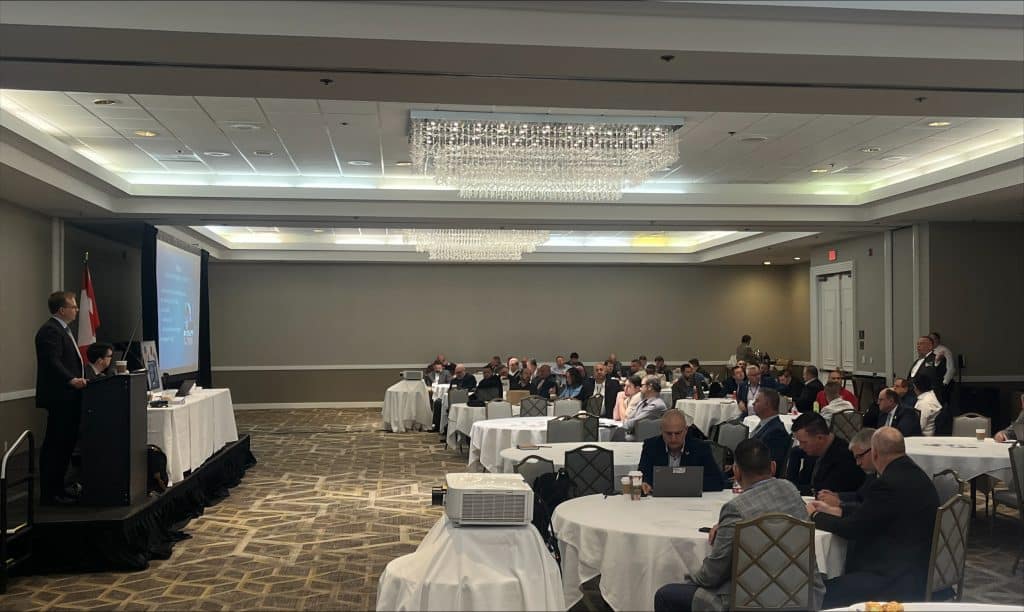

The rest of the nearly two-day legal session focused on strikes, lockouts, picketing and secondary actions in both the United States and Canada. Along with the peculiarities that differentiate labor law from labour law — for example, the fact that in some Canadian jurisdictions, employers are not allowed to bring in scabs — the three lawyers talked about these actions’ potential impact, rules that must be followed in such scenarios, the different categories of picketing, and important considerations to be made around timing, picketing sites, planning and more.
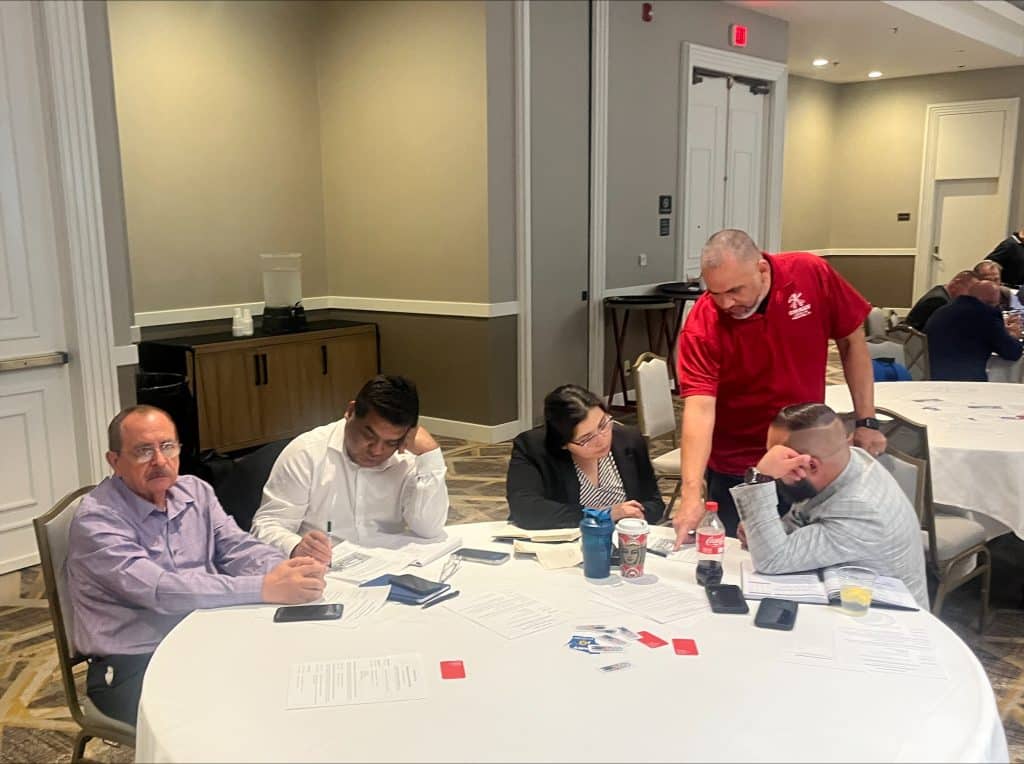

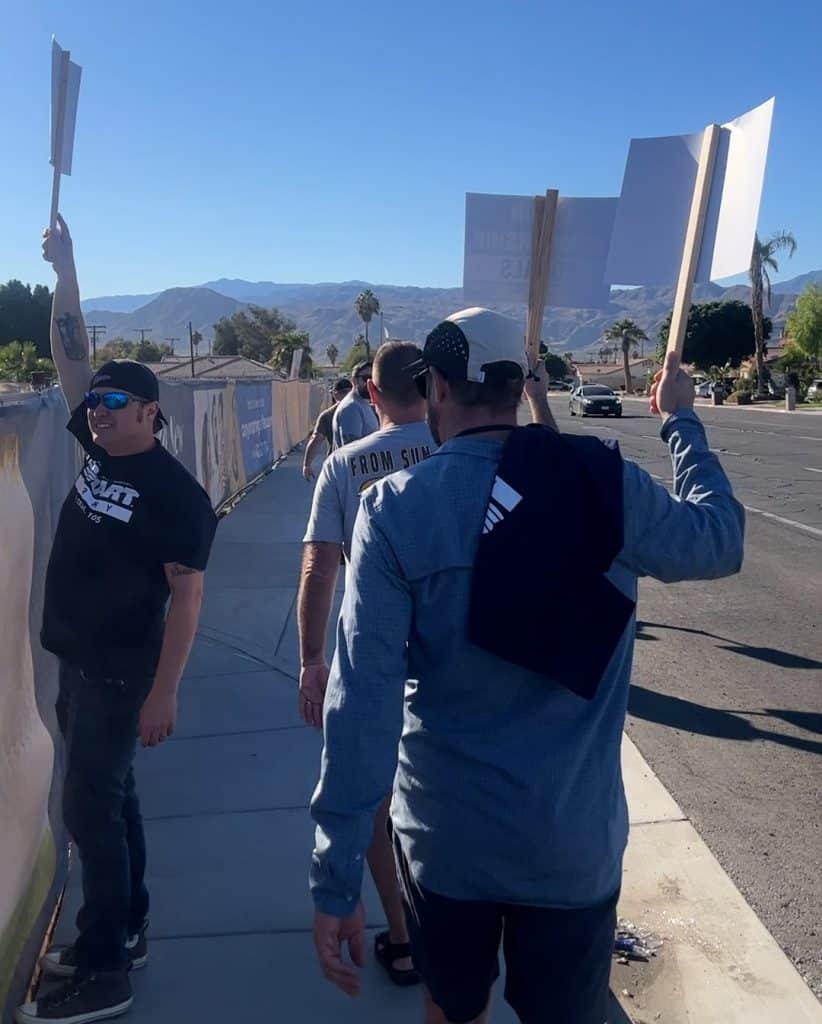

On Thursday, December 5, the Production Workers and Sign Council put their education into practice, picketing two jobsites. Attendees then returned to finish the council meeting, receiving a rundown on what unions can expect — both obstacles and opportunities — from the incoming second Trump administration.
The Three-Pack Attack ended with another demonstration of what SMART solidarity means in action: On each of the three days of council meetings, attendees raised money for Autism Spectrum Athletics — a Southern California charity, founded by Local 105 member Manny Zapata, that gives kids with autism the chance to play sports with others. On the final day, the councils presented their more-than-$40,000 donation to Zapata — an astounding gift.
Overall, all three council meetings sent delegates back to their home locals equipped with new knowledge, skills and relationships that will benefit members across North America.
“This is how we grow stronger and keep fighting for the interests of the membership,” Evans concluded.
Related News
- SMART-TD Applauds FRA and DOT for Strengthening Cross-Border Rail Safety Protections
- Michigan sheet metal worker details impact of canceled project
- Regional Training Seminars coming to St. Paul, Baltimore in 2026
- SMART leaders train to bargain better contracts in Atlanta
- Chicago-area SMART members win big with transit funding bill
- Transit Funding Boost Proposed by SMART-TD Backed Bill
- California SMART-TD Brother Killed on the Job
- Union Mourns the Loss of Brother Charles Harrison
- FRA Issues Grade-Crossing Safety Advisory
- Amtrak To Give SMART-TD Members Holiday Bonuses